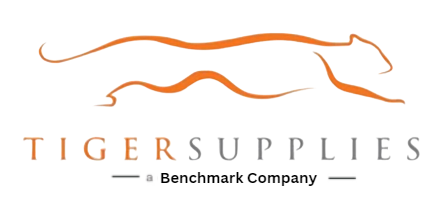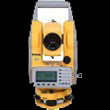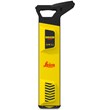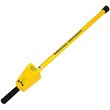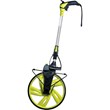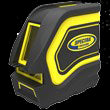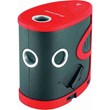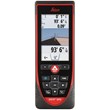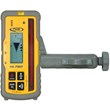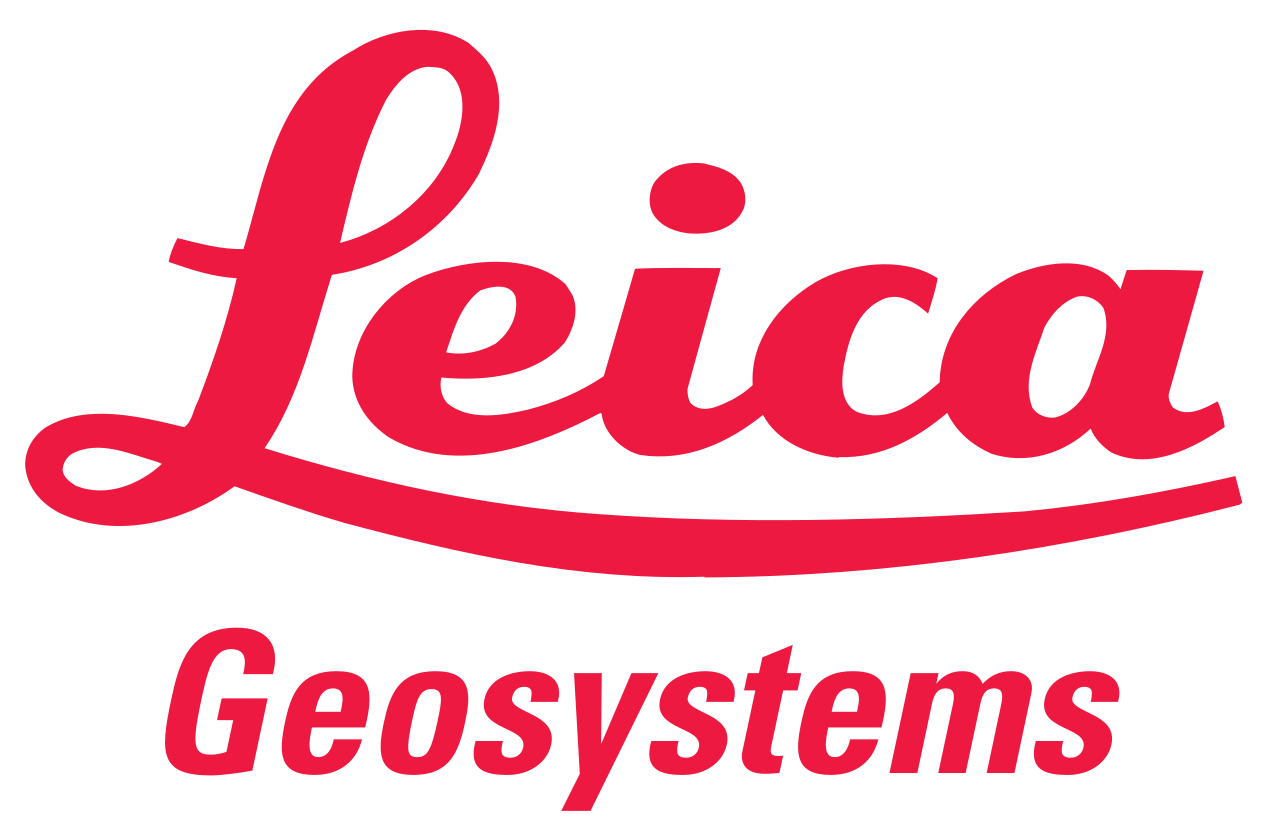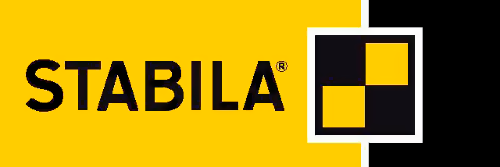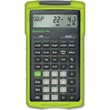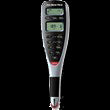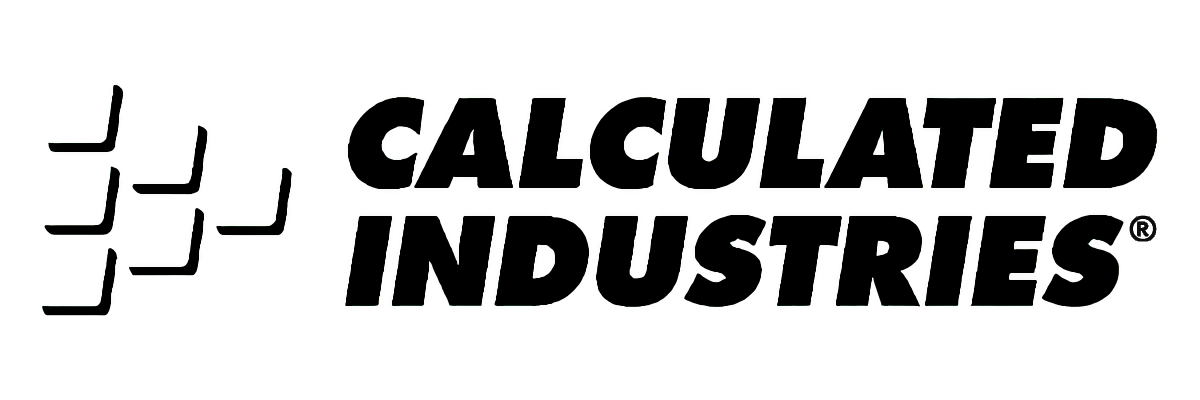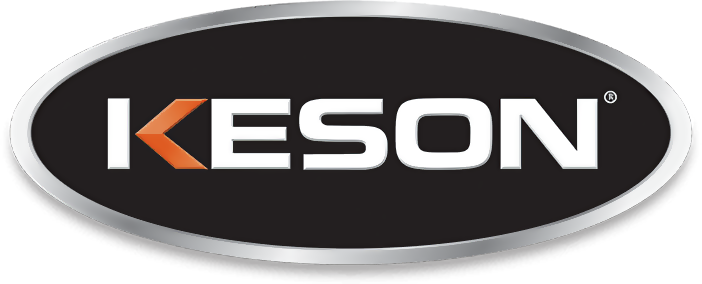Total Stations
Filters
-
R20, Manual Total Station, 600m, 2", Bluetooth
STONEXNo reviewsOriginal price List Price: $3,960.00You Save: $792.00Original price $3,960.00 - Original price $3,960.00Original price List Price: $3,960.00Current price $3,168.00$3,168.00 - $3,168.00Current price $3,168.00| /- Magnification: 30x
- Tilt Sensor Type: Optoelectronic, Dual Axis
- Laser Pointer: Red light, Coaxial
- Laser Type: 635nm
- Protection Class: IP65
- Operating Temperature: -4°F to 122°F (-20°C to +50°C)
Original price List Price: $3,960.00You Save: $792.00Original price $3,960.00 - Original price $3,960.00Original price List Price: $3,960.00Current price $3,168.00$3,168.00 - $3,168.00Current price $3,168.00| / -
Stonex R20-LR Total Station, 1000m, Bluetooth
STONEXNo reviewsOriginal price $4,560.00 - Original price $6,360.00You Save: $912.00Original price $4,560.00 - Original price $6,360.00Original price List Price: $4,560.00$3,648.00 - $5,088.00$3,648.00 - $5,088.00Current price $3,648.00| /- Magnification: 30x
- Tilt Sensor Type: Optoelectronic, Dual Axis
- Laser Pointer: Red light, Coaxial
- Laser Type: 635nm
- Protection Class: IP65
- Operating Time: Upto 22 hours
- Operating Temperature: -4°F to 122°F (-20°C to +50°C)
Original price $4,560.00 - Original price $6,360.00You Save: $912.00Original price $4,560.00 - Original price $6,360.00Original price List Price: $4,560.00$3,648.00 - $5,088.00$3,648.00 - $5,088.00Current price $3,648.00| /

TOTAL STATION BUYER'S GUIDE
Total Stations are the ultimate surveying powerhouse for fast and accurate measurements of distances, vertical angles, and horizontal angles. Total Stations can measure up to 8 miles depending on the model, making it a great choice for small to large surveying, construction, and GIS mapping projects. With our diverse selection of Total Stations, you can find the right one for your project’s needs.
OUR BEST SELLER
The Northwest Instrument NTS03 2 Second Reflectorless Total Station is a versatile and high-performing survey equipment for a wide range of surveying tasks. In reflectorless mode, it measures distances up to 1,970 feet, while extending its range to an impressive 16,400 feet with a prism. Featuring 30x magnification and 2-second angular accuracy, it delivers precision suitable for most applications. The NTS03 offers ample data storage, with capacity for up to 20,000 points in its internal memory or on an SD card. Designed with user convenience in mind, it includes a laser plummet, Bluetooth connectivity, a bright dual-side LCD, and automatic adjustments for atmospheric refraction and earth curvature, ensuring accurate and efficient operation.

What is a Total Station
A Total Station is an advanced surveying instrument that combines an electronic theodolite with an electronic distance meter (EDM). It measures angles and distances with high precision, processes data on-site, and stores it for further analysis, making it indispensable for tasks such as construction layout, topographic mapping, and infrastructure development.
Key Components and How to use a Total Station
Total stations integrate several key components to deliver precise measurements and efficient data processing:
- Electronic Theodolite: This core component measures horizontal and vertical angles, ensuring precise alignment.
- Electronic Distance Meter (EDM): Using laser or infrared signals, the EDM calculates distances by measuring the time a light beam takes to travel to and from a target.
- Microprocessor: The built-in microprocessor processes raw data and stores it for analysis or export to external software.
- Display Screen: Measurements are shown on an easy-to-read screen for quick validation and adjustments.
- Data Storage: Advanced models feature built-in data storage for seamless transfer to CAD software or other applications.
To operate, the surveyor locks the instrument onto a prism or target surface using the telescope. Reflectorless models eliminate the need for a prism, measuring directly from surfaces. Robotic total stations further automate these processes, tracking targets and transferring data in real time for enhanced productivity.
Types of Total Stations
Total stations can be categorized into four types, each designed to meet specific project demands:
Manual Total Stations
Also known as mechanical total stations, they require manual alignment and adjustments. These instruments are operated by two people—one adjusting the total station and the other managing the prism. While budget-friendly and practical for small-scale projects, manual total stations may slow workflows and are more prone to human error compared to automated alternatives.
Robotic Total Stations
They automate much of the surveying process. A single operator can control the instrument remotely, and advanced features such as automated target tracking and real-time data transfer significantly improve accuracy and efficiency. These models are ideal for large-scale projects and dynamic environments where precision and speed are critical.
Reflectorless Total Stations
These total stations eliminate the need for prisms, using laser signals to measure distances directly from surfaces. These instruments are particularly valuable in inaccessible or hazardous locations, such as cliffs, tunnels, or heavily congested urban areas. Their range varies from 1,300 to 6,500 feet, though accuracy can depend on environmental conditions and the target's surface.
Prism-based Total Stations
They rely on prisms to reflect EDM signals, enabling long-range measurements of up to 16,400 feet. Known for their exceptional precision, these instruments are commonly used in geodetic surveys, large infrastructure projects, and expansive mapping tasks.
Total Station Applications
Total stations play a pivotal role in a wide range of industries and projects. Their precision, versatility, and advanced technology make them indispensable for tasks such as:
Land Surveying
Total stations are essential for mapping property boundaries, topographical features, and terrain contours. Their high accuracy ensures reliable data for land development, real estate transactions, and legal compliance.

Construction Layout
Surveyors use total stations to mark positions for foundations, utilities, and structural elements. This ensures that construction aligns precisely with design plans, reducing errors and rework.
Infrastructure Design
From roads and bridges to railways and airports, total stations are used to align and grade complex infrastructure projects. Their ability to measure angles, distances, and elevations with precision helps engineers achieve optimal designs.
Mining and Tunneling
Total stations monitor excavation progress, guide tunnel boring machines, and measure excavation volumes. Reflectorless models are particularly useful in the confined and rugged environments of mines and tunnels.
Utility Installation
Total stations are used to plan and install underground pipes, electrical cables, and drainage systems. Their precision minimizes conflicts with existing infrastructure and improves installation efficiency.
Technology Advancements in Total Stations
Modern total stations incorporate innovative technologies that revolutionize surveying and construction workflows:
3D Laser Scanning Integration
Many total stations now combine traditional measurement functions with 3D scanning capabilities, allowing surveyors to capture highly detailed topographic data. These features are particularly useful in fields like structural monitoring, urban planning, and archaeological site documentation. By integrating these two functionalities, professionals can save time and costs associated with using separate devices.
Real-Time Cloud Connectivity
Surveyors increasingly benefit from real-time data transfer to cloud platforms, enabling instant collaboration among team members across various locations. This connectivity is essential for large projects where timely data sharing ensures that all stakeholders are aligned.
Artificial Intelligence (AI) and Machine Learning
AI-powered features enhance accuracy by detecting and correcting errors automatically. Robotic total stations now use machine learning algorithms to optimize workflows, recognize patterns, and adapt to challenging conditions. Additionally, AI-assisted obstacle detection improves performance in complex or crowded environments.
Extended Ranges and Higher Precision
Advances in EDM technology have pushed measurement ranges beyond 16,000 feet while achieving sub-millimeter precision. These improvements make total stations versatile for use in both dense urban areas and vast rural landscapes, ensuring exceptional reliability regardless of project scale.
Seamless Integration with GIS and BIM Platforms
Modern total stations are designed for compatibility with Geographic Information Systems (GIS) and Building Information Modeling (BIM) software. This integration allows data collected on-site to be seamlessly incorporated into design and analysis workflows, reducing project timelines and improving accuracy.
Theodolites vs. Total Stations
While theodolites and total stations share some similarities, they differ significantly in functionality and scope:
Theodolites are designed to measure angles, both horizontal and vertical. They are manually operated and require users to record measurements separately, leaving room for errors during data collection and processing. As a result, theodolites are best suited for tasks like alignment and leveling, where only angular measurements are needed.
Total stations, in contrast, combine the functions of a theodolite with EDM technology, enabling precise angle and distance measurements. They store data electronically, reducing errors and facilitating advanced workflows like boundary surveys, topographic mapping, and construction layout. This versatility makes total stations indispensable for modern surveying applications.
Factors to Consider When Buying a Total Station
Choosing the right total station requires careful consideration of your project requirements, budget, and long-term goals:
1. Identify Project Needs
Determine whether your work involves small-scale projects, such as basic land surveys, or large-scale infrastructure tasks requiring high precision and advanced features. Manual total stations suffice for simpler projects, while robotic and reflectorless models excel in more complex environments.

2. Set a Budget
Prices vary widely based on functionality. Entry-level models typically range from $5,000 to $8,000, while advanced robotic and reflectorless total stations can cost $12,000 to $25,000 or more. Assess whether the additional investment aligns with your project's complexity and frequency.
3. Evaluate Key Features
When comparing models, prioritize features that match your needs:
- Robotic Functionality: Enables single-operator control and enhances productivity.
- Reflectorless Capability: Allows measurements in inaccessible or hazardous areas.
- Range and Accuracy: Look for instruments offering long ranges (up to 16,400 feet) with sub-millimeter precision.
- Data Integration: Ensure compatibility with GIS, CAD, or BIM software to streamline workflows.
4. Consider Durability
For outdoor work, choose rugged models designed to withstand extreme conditions. Weather-resistant casings, reinforced optics, and temperature tolerance are essential features for reliable performance.
5. Select a Trusted Brand
Reputable manufacturers such as Leica, Stonex, and Geomax are renowned for producing high-quality instruments. The Stonex R25L Total Station provides reliable precision, reflectorless measurement capabilities, and robust construction, all at a more accessible price point.
6. After-Sales Support
Select a supplier offering robust after-sales services, including warranties, calibration support, and user training. This ensures your investment remains accurate and functional for years to come.
Total Stations FAQs
Q: How accurate is a total station
A: Total stations offer exceptional accuracy, with most models achieving angular precision of 1 to 5 seconds and distance measurement accuracy up to 1 millimeter per kilometer. Advanced robotic models provide sub-millimeter accuracy, suitable for demanding applications like construction layout and geodetic surveys.
Q: What is the signal type for total stations?
A: Most total stations use laser or infrared signals for distance measurement. Reflectorless models rely on a direct laser beam, while prism-based models use EDM (Electronic Distance Measurement) technology to send and receive signals via a prism.
Q: Can total stations be used indoors?
A: Yes, total stations are suitable for indoor projects such as interior mapping, equipment alignment, and layout tasks during renovations.
Q: How long does a total station battery last?
A: The battery life of a total station varies depending on the model and usage, but most can operate for 8 to 12 hours on a full charge. Carrying spare batteries is recommended for extended fieldwork.
Q: How to choose the right tripod for a total station?
A: Select a durable tripod designed for stability in the field. Wooden or composite tripods are often preferred for their ability to dampen vibrations, ensuring more precise measurements in windy or uneven conditions.
Q: How often should a total station be calibrated?
A: Calibration is recommended annually or whenever discrepancies in accuracy are observed.
Q: Why use a total station instead of GPS?
A: Total stations offer significantly higher precision than GPS, making them ideal for tasks requiring millimeter-level accuracy, such as construction layout, boundary surveys, and topographic mapping. Unlike GPS, total stations work effectively in obstructed environments like forests, urban areas, or tunnels, where GPS signals may be blocked.
Q: When should I use a total station instead of a laser scanner?
A: Laser scanners are ideal for creating highly detailed 3D models but are costly. Total stations are more budget-friendly for standard 2D measurements and basic 3D tasks, providing excellent accuracy for most surveying applications.
Q: What is the lifespan of a total station?
A: With proper maintenance, total stations typically last 10–15 years.
Q: What training is required to use a total station?
A: Basic surveying knowledge is sufficient for manual models, while advanced models may require training on software integration and troubleshooting.
Q: How does weather impact total station accuracy?
A: Weather conditions like heavy rain, fog, or extreme heat can affect measurements. For example, fog can scatter laser beams, reducing the range of reflectorless models. Dust and high humidity may also require more frequent cleaning of lenses and optics to maintain accuracy. Weather-resistant designs help mitigate these issues.
Q: Are total stations compatible with drones for aerial surveys?
A: Yes, many modern total stations can integrate with drones for enhanced surveying capabilities. Drones can map large or inaccessible areas, while total stations provide precise ground control points (GCPs) to improve overall accuracy in the final dataset.
Q: What are common errors when using total stations and how to fix them?
Common errors include improper leveling, incorrect calibration, and environmental interference (e.g., heat or fog). These can be minimized by regular maintenance, proper setup, and consistent checks during measurements.
Q: Can total stations be upgraded or customized?
A: Yes, many manufacturers offer software updates and accessory add-ons to enhance functionality. Features like robotic upgrades, data integration tools, and enhanced communication modules can extend the capabilities of older models.
How to Maintain a Total Station
Maintaining your total station properly is essential to ensure consistent accuracy and prolong its lifespan. Here are key maintenance practices to follow:
Regular Cleaning
Keeping your total station clean is essential for maintaining accuracy and longevity. Gently clean the lenses using a soft, lint-free cloth to avoid scratches. Never use abrasive materials on the optics. For the exterior, wipe the housing with a damp cloth to remove dirt, dust, or debris that could interfere with operations. Regular cleaning ensures the instrument performs at its best in the field.
Proper Storage
When not in use, always store your total station in its protective case to prevent damage during transport or handling. Choose a dry, temperature-controlled environment to avoid issues caused by humidity or extreme heat. Proper storage minimizes wear and tear, ensuring the equipment remains reliable over time.
Calibration
Routine calibration is critical to maintaining your total station’s accuracy. Schedule annual calibration by a certified technician to verify that measurements remain consistent and precise. Additionally, perform regular field checks to detect any issues that might arise during normal use.
Limit Exposure
Protect your total station from prolonged exposure to harsh conditions such as direct sunlight, excessive moisture, or dust. Use a weather-resistant cover when operating in challenging environments to safeguard sensitive components and ensure reliable performance.
Inspect before Use
Before using your total station, conduct a thorough inspection to check for loose components, misalignments, or visible damage. Confirm that the tripod and tribrach are stable, properly leveled, and free from defects. Taking a few moments for a pre-use check reduces the risk of measurement errors during your work.
Handle with Care
Transporting your total station requires careful handling to prevent damage. Always use the protective case to protect it from impacts. Avoid dropping the instrument or subjecting it to heavy handling, as its sensitive components require proper care for long-term reliability.
Keep Batteries in Good Condition
To prevent interruptions during fieldwork, charge your total station batteries fully before use and carry spares as a backup. Regularly clean battery contacts to maintain proper power connections and ensure consistent operation throughout your projects.
Update Firmware
Advanced total station models often benefit from periodic firmware updates. Keeping the firmware up to date ensures compatibility with modern systems, optimizes performance, and may unlock new features to enhance your workflows.
Professional Servicing
If your total station experiences significant wear, malfunction, or damage, consult the manufacturer or a certified service provider for diagnostics and repairs. Regular servicing helps maintain accuracy and functionality, protecting your investment in this essential tool.
Total Station Accessories
The right accessories can enhance the accuracy and efficiency of your total station. Here are some essentials:
Tripods: Provide stability during measurements. Choose durable options like composite or wooden tripods for better performance in uneven or windy conditions.
Prism and Prism Poles: Reflect EDM signals for long-distance measurements. Adjustable poles with leveling bubbles improve placement accuracy.
Tribrachs and Adapters: Ensure proper leveling and alignment, crucial for multi-instrument setups.
Batteries and Chargers: Keep spare batteries and reliable chargers handy to avoid downtime during fieldwork.
Data Collectors: Record and transfer measurement data seamlessly. Look for models with touchscreen and Bluetooth compatibility.
Protective Cases and Covers: Safeguard your total station and accessories during transport and in harsh weather conditions.
These tools ensure smooth workflows and consistent accuracy, making them indispensable for any total station user.
Shop Worry-Free for the Best Total Station
Looking for the best total station for your needs? Browse Tiger Supplies' wide selection of manual, robotic, and reflectorless models from top brands like Leica and Stonex. Contact our experts today for personalized guidance and unlock the full potential of advanced surveying equipment.
